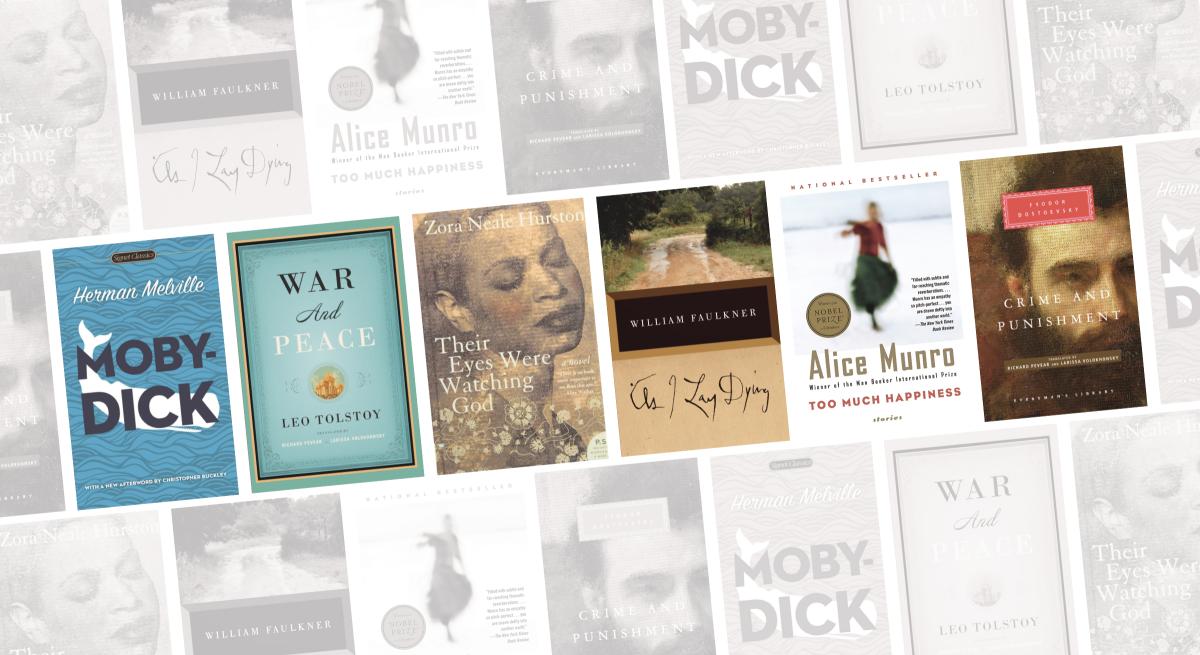One afternoon in spring 2013, I found myself listening to tales dating back to the liberation of Paris from the Nazis. The man with whom I was speaking, Jerome Bruner, had started his career as an expert in psychological warfare with the U.S. Army. As a soldier, he landed on the beaches of Northern France, and in 1945, he served as the U.S. cultural attaché in Paris. Over the next 70 years, Bruner became one of the most prominent psychologists and educators of the 20th century, and he was then on the NYU School of Law faculty.
Among his countless contributions, Bruner provided invaluable insights on the role of fiction in shaping how we think. This was the main reason I had asked to meet him. At the time, my then–graduate student, David Kidd, and I had just begun exploring the relationship between reading fiction and the capacity to understand the minds of others—an important leadership skill. Six months after this meeting, Kidd and I published the first evidence supporting our conjecture that it is specifically literary fiction that sharpens this all-important social cognition capacity, known as mentalizing, or Theory of Mind (ToM).
What Is Theory of Mind?
In its most basic form, ToM is simply the recognition that others have minds that differ from our own. In its advanced forms, it involves higher-level cognitive processing and is best defined as the capacity to accurately infer and represent other people’s thoughts, emotions, and complex mental states such as beliefs and intentions. ToM is a building block of human cognition that supports social functioning. In fact, ToM deficits are thought to characterize conditions such as autism and schizophrenia, which cause impairment of social functioning.
More important, in the context of military leadership, research in the field of management and organizational behavior has shown that ToM is part and parcel of social/emotional intelligence and also supports collective intelligence—a measure of team performance. My own research further shows that ToM underpins strategic intelligence, or the capacity to anticipate other people’s behavior and adapt our own behavior accordingly. Anthropologists have argued that ToM played a key role in our evolutionary success as a species, as it allowed us to anticipate the behavior of our fellow humans, thus furthering enhanced cooperation and coordination with others. I would be surprised if the success of military operations, such as those carried out by Navy SEAL teams, does not, in part, depend on the heightened capacity of team members to read each others’ minds to quickly coordinate action in the face of emergency and unforeseen circumstances. ToM, of course, also helps identify the enemy’s leverage points, push his buttons, and anticipate his next move.
For decades, cognitive scientists have been investigating how ToM develops, but their focus has been almost exclusively on infants and young children (to determine when this capacity emerges) and neuro-atypical adults (to better understand their condition). Much less is known about how to develop and improve ToM in adults. Is it even possible?
Fostering Theory of Mind
Since the early 2000s, thanks to Toronto-based scholars Raymond Mar and Keith Oatley, we have known that reading stories, and fiction in particular, is associated with ToM capacity. These scholars showed that people more familiar with authors such as John Irving or Tom Clancy also scored higher on a well-known and widely used test of ToM called Reading the Mind in the Eyes Test, or eyes-test for short. The eyes-test consists of guessing which mental state, among four possible responses, is being experienced by a person. Mar and Oatley propose that this correlation exists because fiction is a simulation of real life. When we read fiction, our minds treat the characters as if they were actual human beings. Therefore, it is as if we were practicing social skills in real life.
To measure familiarity with fiction, Mar and Oatley used an instrument called the Author Recognition Test. The test consists of a long list of names, some of whom are real fiction authors and some who are not. Study participants are asked to indicate those names they recognize and are scored based on the total number of correctly identified authors, regardless of whether they were literary or popular fiction authors. My collaborators and I thought about using this test differently. Does it matter if we read literary authors such as John Irving, Jonathan Franzen, and Alice Munro, rather than popular fiction authors such as Tom Clancy, Danielle Steele, and James Patterson? It turns out that it does.
In studies similar to those originally carried out by Mar and Oatley, instead of computing one score for the Author Recognition Test, my collaborators and I computed two separate scores: one for recognizing literary fiction authors and one for recognizing popular fiction authors. What we found is that only the literary fiction score predicts performance on the eyes-test; the more you read literary fiction, the stronger your ToM skills. Being familiar with popular fiction, on the other hand, had no impact.
This result is rather robust: it was replicated in various studies and remains when we statistically control for other variables (e.g., having majored in literature, age, socioeconomic status, etc.) that might be associated with knowing more fiction authors, especially the literary authors. Most important, the same effect emerges in highly controlled experiments, where instead of measuring people’s familiarity with different kinds of fiction, we make them read one type or another and then measure their performance on ToM tests. It was these experiments that David and I discussed with Bruner that afternoon of 2013 and were published later that year in the journal Science.1
Experiments with humans consist of taking an appropriately large number of people and randomly assigning them to two or more conditions in which they receive different “treatments.” The randomized, placebo-controlled experiments being used these days to evaluate the efficacy of various drugs in treating COVID-19 are an example of this type of experiment in medicine. Some people get the drug, others get a placebo, and then researchers compare the two groups on measures of interest (e.g., how they are faring). The random assignment of people to the different conditions ensures that, if differences emerge between the groups, they are because of the drug and not preexisting differences between the people in these groups. In our experiments, we dispense texts instead of drugs: Participants are asked to read excerpts of novels or short stories that, depending on the conditions to which they are assigned, are literary or popular. What we found across five different experiments, using a variety of literary and popular texts and several different measures of ToM, is that those exposed to literary fiction perform better on the ToM tasks.
What Is Literary Fiction?
There are a few aspects that differentiate literary from popular fiction and account for these effects. One is whether meaning is delivered to the reader by the author or has to be constructed by the reader. Popular fiction provides ready-to-wear, unequivocal meanings to readers; it maintains and reinforces the culturally learned and socially shared expectations that the readers possess about the world and other individuals (e.g., personality type) and groups (e.g., stereotypes). It is a simplified, and at times simplistic, version of the world, where there are good people and bad people, who largely behave as expected. The righteous always triumph, as does love. This is achieved through various techniques, among which are the use of familiar metaphors and clichés, as demonstrated through computer-assisted analyses of novels by statistician Ben Blatt. Blessing in Disguise, Safe Harbor, Until the End of Time, and One Day at a Time are some titles of Danielle Steel’s novels. The titles of books by, say, Jonathan Franzen, do not offer up the punch line in quite the same way: The Corrections, Purity, The Kraus Project. Jerome Bruner had, of course, already recognized this, and he commented to me that literary texts traffic “in human possibilities rather than in settled certainties.”2 Readers of literary fiction have to deal with ambiguities and uncertainties and therefore have to make a greater interpretive and inferential effort.
Another aspect that differentiates popular and literary fiction is their relative emphasis on the plot versus characters. Popular fiction is chiefly concerned with the plot; its characters provide clear anchors around which the plot can be developed. Literary fiction is more concerned with the inner life of the characters: their idiosyncrasies, uniqueness, and consciousness.
Finally, even when the inner life of the characters is the subject, popular fiction tends to present it in an unequivocal manner, while literary characters remain more obscure, inscrutable, and unpredictable. This can be explained by the adage show, don’t tell. “Don’t tell me the moon is shining; show me the glint of light on broken glass,” said Russian writer Anton Chekhov. A text tells when it makes explicit reference to the mental states of the characters: what they want, think, desire or, simply, know. A text that does not tell us, but shows us, relies much less on these thought verbs and uses instead concrete descriptions that require the reader to infer what the character wants, knows, or does not know.
The greater inference required by the reader of literary fiction translates into the sharpening of certain social cognition skills, among which is Theory of Mind. The greater complexity of the literary world, compared with that of popular fiction, seems to have an effect on other thinking processes. A recent article I coauthored with my former student Alison Jane Martingano and philosopher Pietro Perconti shows that exposure to literary, but not popular, fiction predicts the tendency to favor more complexity in accounting for the behavior of others—and greater accuracy in social judgment.3
The prevailing discourse around current education in the United States has focused on the importance of STEM—a curriculum that focuses on science, technology, engineering, and mathematics. There is no doubt that with the ever-increasing role of technology in our society, these disciplines are of fundamental importance. Yet, we are ultimately a human society. We must work cooperatively within teams, organizations, institutions, and countries. And we must compete successfully against others. To succeed in both endeavors, we need leaders who can boost team performance (collective intelligence) and who are able to anticipate, and counter, other people’s behavior (strategic intelligence). Both forms of intelligence are supported by Theory of Mind processes. An appropriate curriculum to form tomorrow’s leaders should therefore include experiences that foster it. Reading literary fiction is one such experience.
1. David Comer Kidd and Emanuele Castano, “Reading Literary Fiction Improves Theory of Mind,” Science 342, no. 6156 (18 October 2013): 377–80, science.sciencemag.org/content/342/6156/377.
2. Jerome Bruner, Actual Minds, Possible Worlds (Cambridge, MA: Harvard University Press, 1986), 215.
3. Emanuele Castano, Alison Jane Martingano, and Pietro Perconti, “The Effect of Exposure to Fiction on Attributional Complexity, Egocentric Bias and Accuracy in Social Perception,” PLOS One 15, no. 5 (29 May 2020), journals.plos.org/plosone/article?id=10.1371/journal.pone.0233378.








